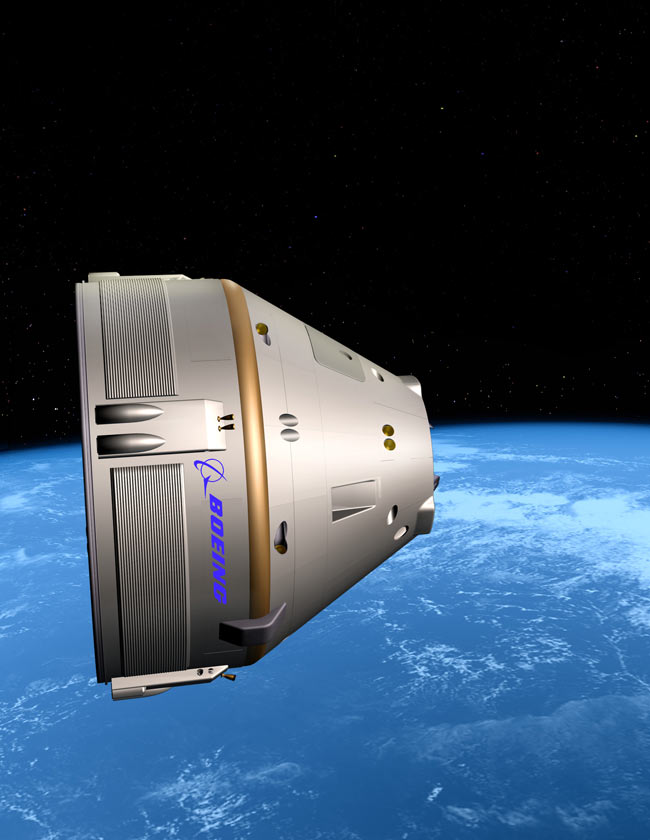Boeing to Build Private Space Taxis in Old NASA Shuttle Hangar

Aerospace giant Boeing has inked a deal to use an old space shuttle hangar at NASA's Kennedy Space Center in Florida to build the private company's new spaceship designed to ferry astronauts to and from the International Space Station, company officials announced today (Oct. 31).
Boeing ironed out the details of the lease with Space Florida, an aerospace economic development agency supported by the state. The veteran aerospace company will rent one of the space shuttle processing hangars — Orbiter Processing Hangar Bay 3 — at NASA's Florida spaceport.
Boeing is expected to use the hangar to build its CST-100 (short for Crew Space Transportation-100) capsule, which is being designed as a space taxi to bring astronauts to and from destinations in low-Earth orbit, such as the International Space Station. [CST-100: Photos of Boeing's Private Space Capsule]
The proposed gumdrop-shaped capsule will carry up to seven passengers and launch on an Atlas 5 rocket, company officials have said.
NASA retired its 30-year space shuttle program in July, creating a gap in American human spaceflight capabilities. The agency is currently relying on Russian Soyuz vehicles to carry astronauts to the space station and back at a reported ticket price of approximately $350 million per year.
In April, Boeing received $92 million from NASA during the second round of the space agency's Commercial Crew Development (CCDev) program. The company also received $18 million for the CST-100 during the first round of funding in February 2010.
Through CCDev, NASA is seeking to improve the capabilities of private spaceflight. Three other companies received funding from NASA as part of the second round of the CCDev program. The agency is hoping that commercial vehicles will be ready to carry astronaut passengers by the end of 2016.
Get the world’s most fascinating discoveries delivered straight to your inbox.
Boeing has also teamed up with private space company Bigelow Aerospace, which is developing a commercial space station made up of inflatable habitats. In the agreement, Boeing's CST-100 will be used to transport commercial and government clients to Bigelow's space station.
Following the retirement of the space shuttles, Kennedy Space Center is being rejuvenated to support future NASA ambitions, in addition to hosting commercial and military endeavours.
This story was provided by SPACE.com, sister site to Live Science. You can follow SPACE.com staff writer Denise Chow on Twitter @denisechow. Follow SPACE.com for the latest in space science and exploration news on Twitter @Spacedotcom and on Facebook.

Denise Chow was the assistant managing editor at Live Science before moving to NBC News as a science reporter, where she focuses on general science and climate change. Before joining the Live Science team in 2013, she spent two years as a staff writer for Space.com, writing about rocket launches and covering NASA's final three space shuttle missions. A Canadian transplant, Denise has a bachelor's degree from the University of Toronto, and a master's degree in journalism from New York University.



